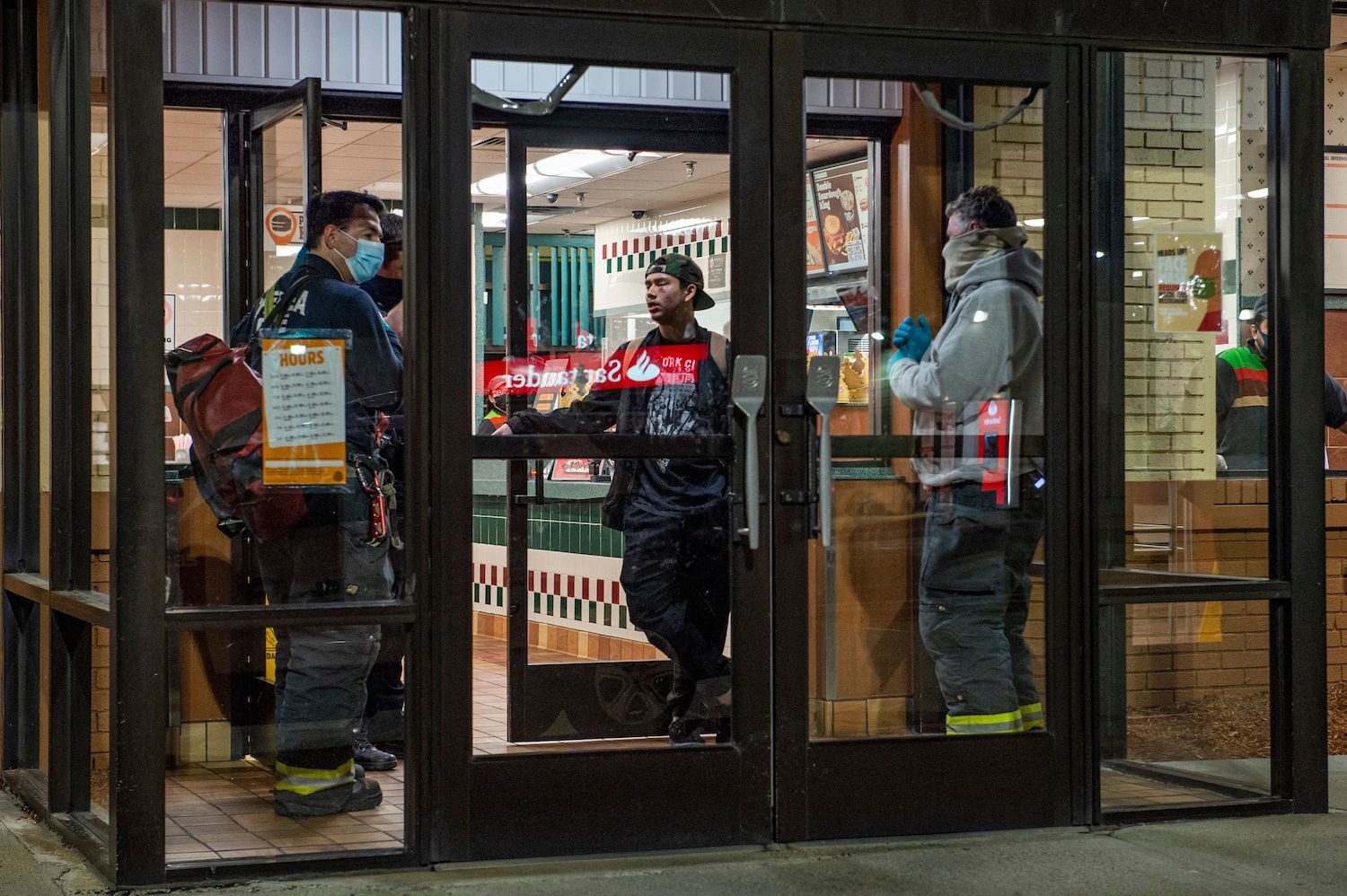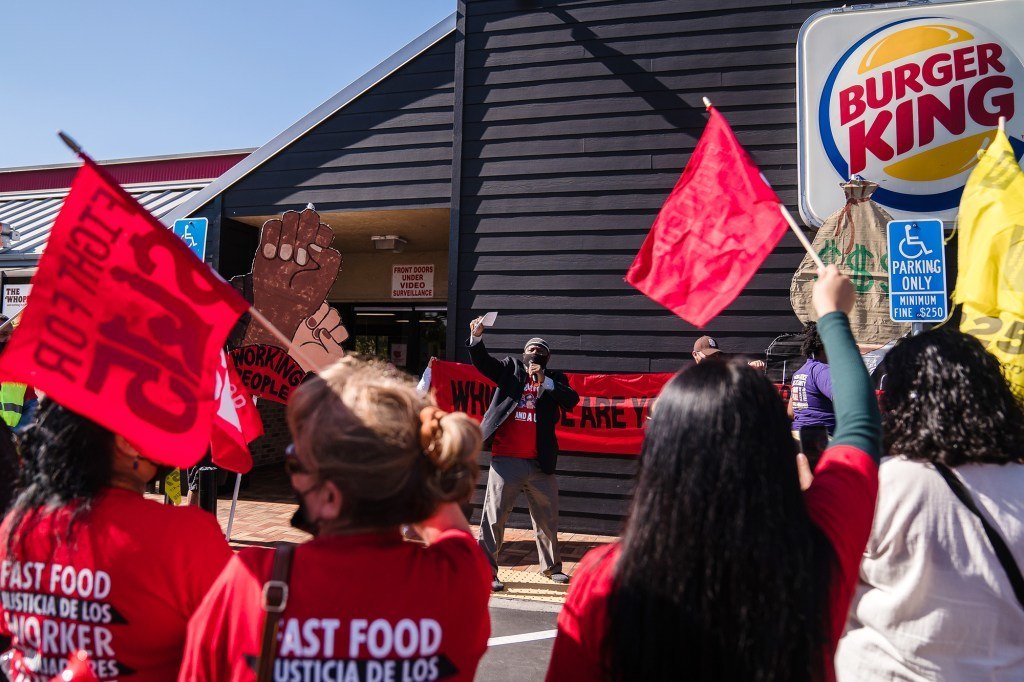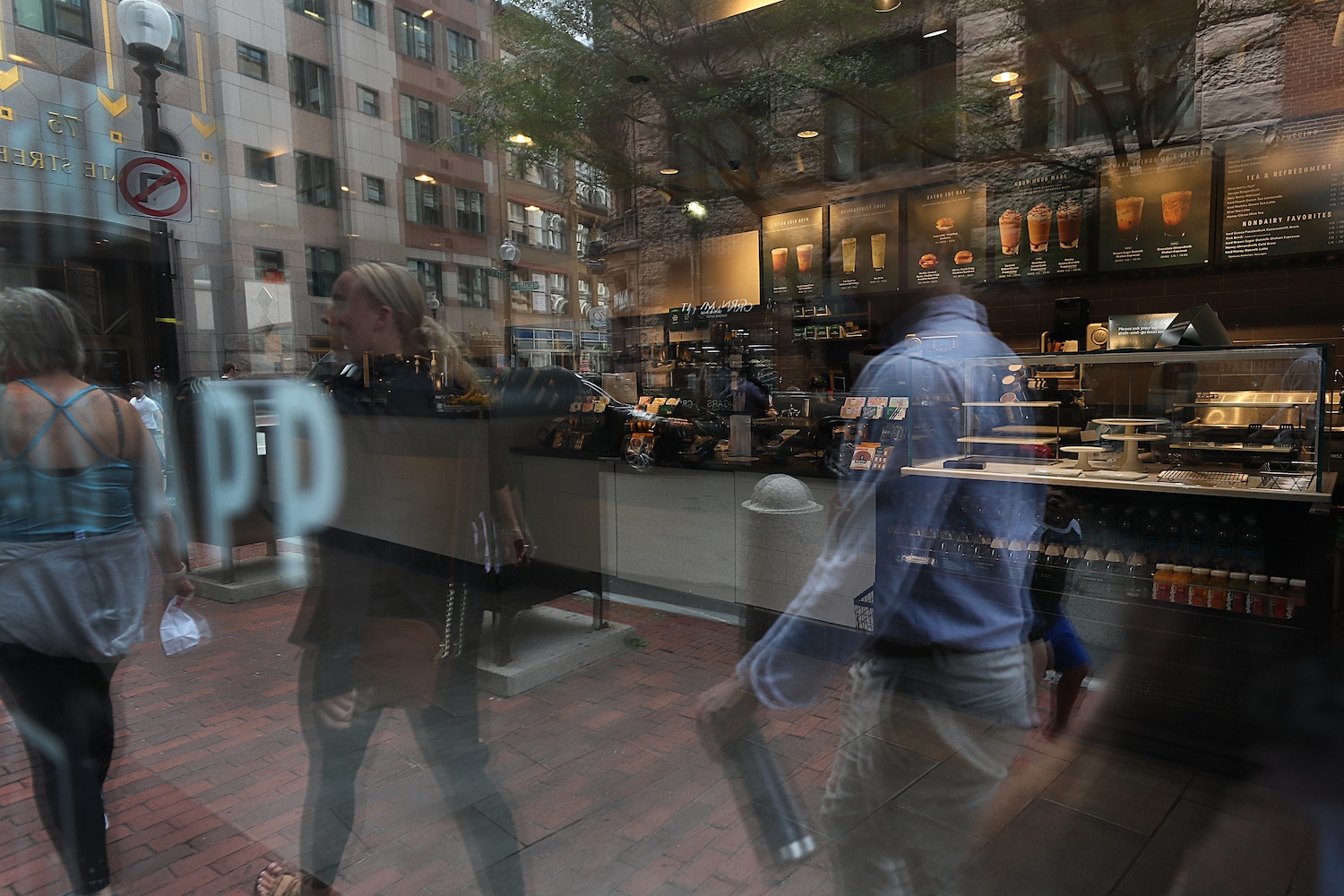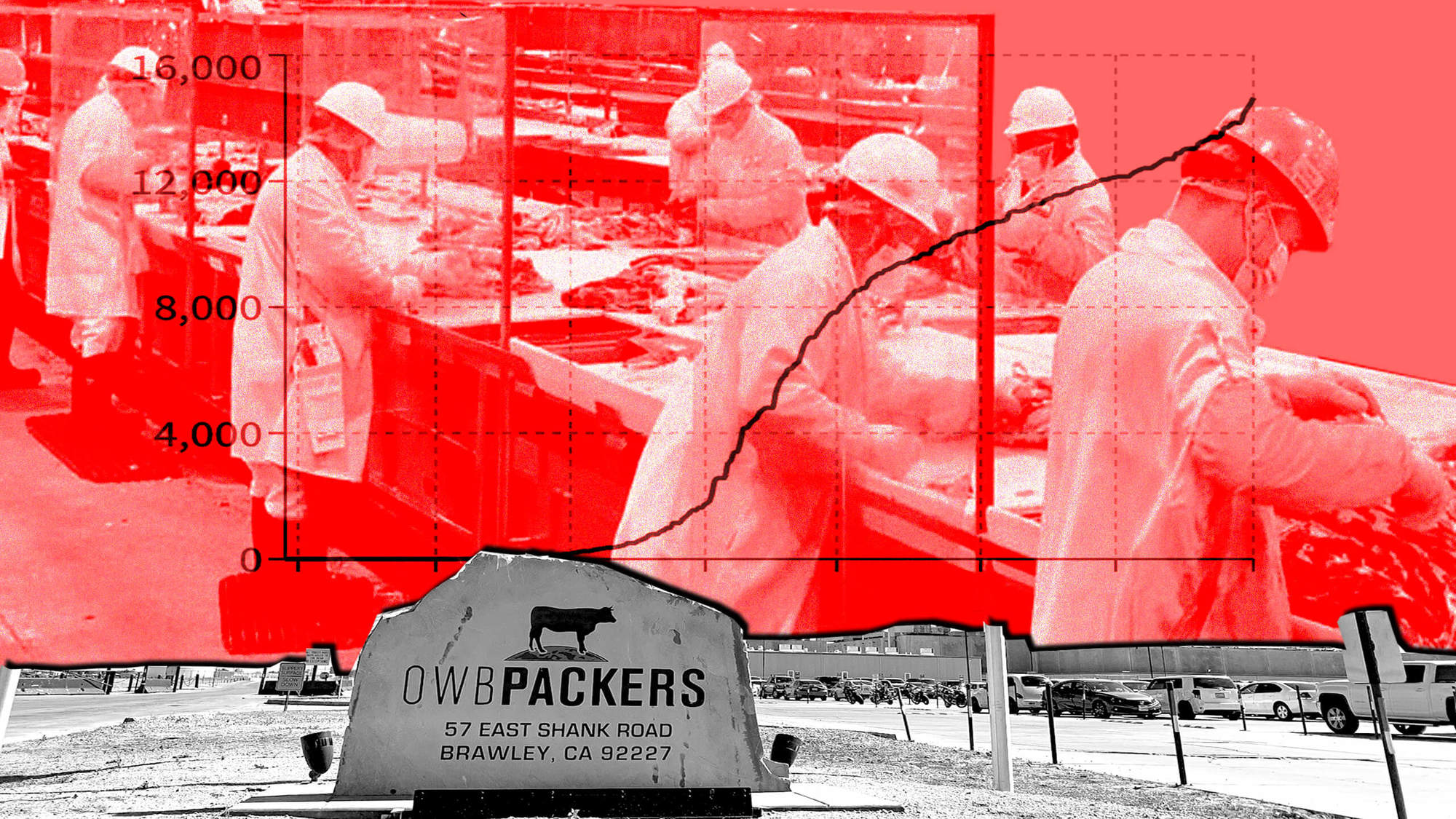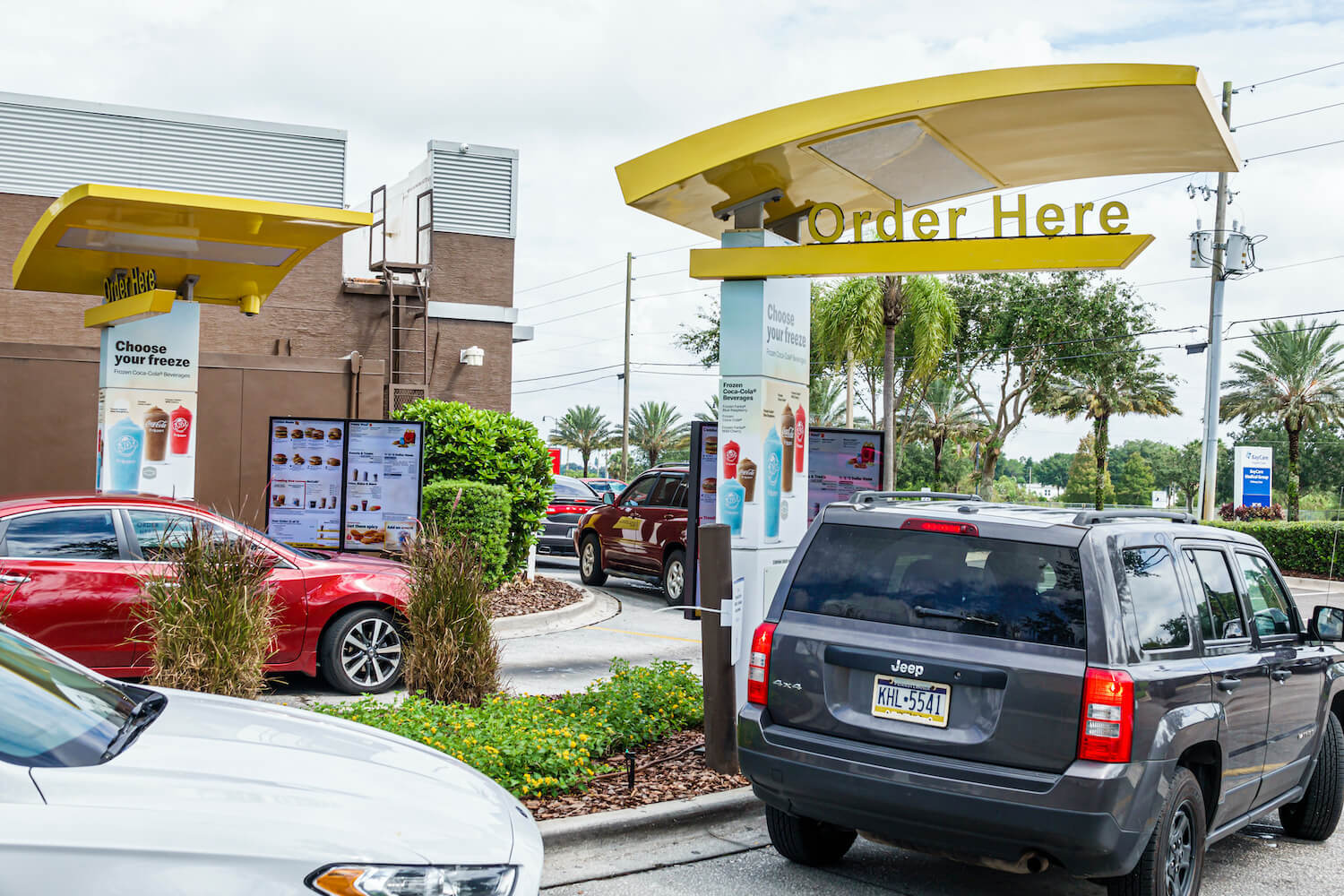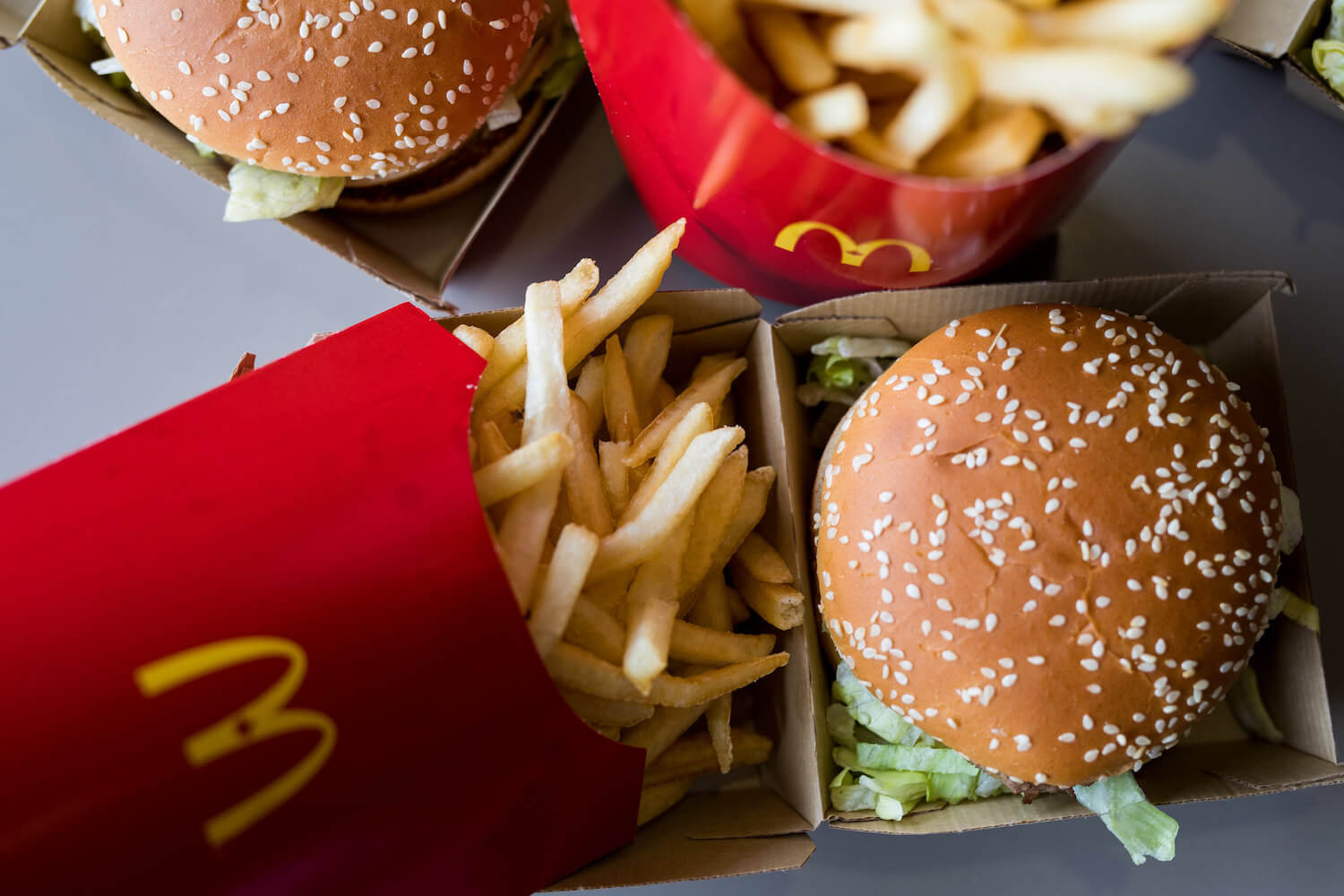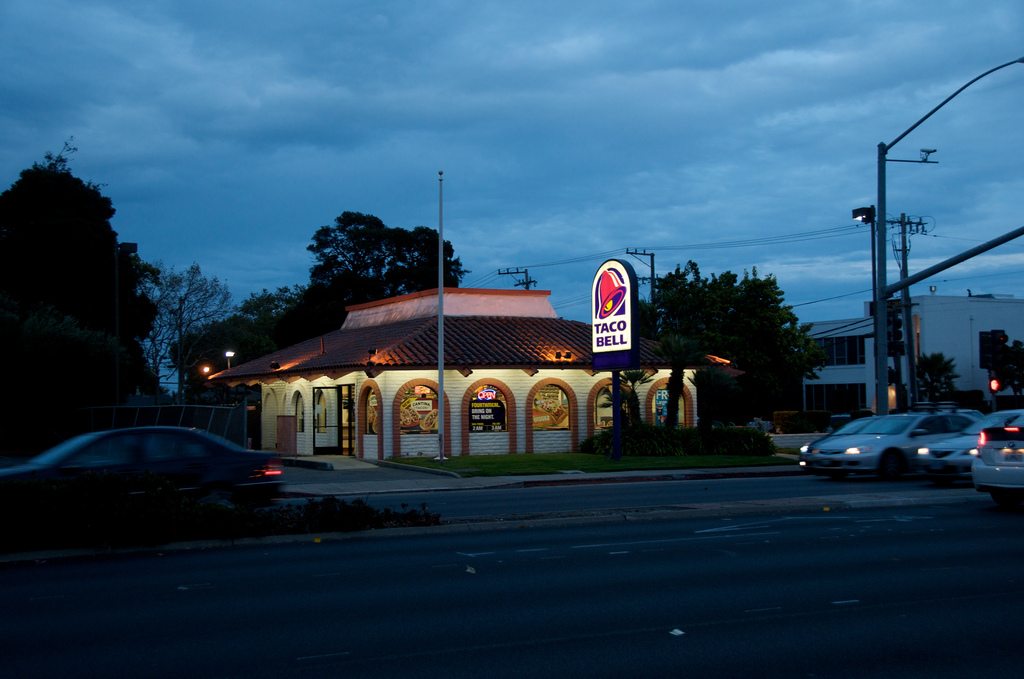
Graphic by Alex Hinton/iStock studiocasper/YurolaitsAlbert/NoDerog/ermingut/Danilo Oliver
Recent findings from Harvard and the University of California, San Francisco show fast-food companies faring worst at staff vaccination rates compared to retail and service firms.
Update, January 13, 2022, 4:50 p.m., EST: On Thursday afternoon, the Supreme Court blocked the Biden administration’s vaccine-or-testing mandate for large private employers, but upheld a requirement that healthcare workers at facilities that receive federal funding be vaccinated.
It wasn’t just the mid-December Covid outbreak at his Taco Bell location that frustrated Max Klein. The new Omicron variant had just begun to sweep the nation, and having worked more than a year in an industry with high customer traffic, exposure to the virus was inevitable. So Klein assumed that, like he had, most of his co-workers would get vaccinated. But at the Joliet, Illinois, store where Klein worked, he said his vaccine status made him something of an anomaly, not the norm. And this surprised Klein.
The policy at his franchise location was that any unvaccinated person exposed to Covid had to quarantine until they could produce a negative test for the virus, regardless of whether they had actually contracted it. But at some point during the early-stage Omicron chaos, Klein said, a little back-of-the-envelope arithmetic told him that roughly sixty percent of his co-workers had not been vaccinated. To keep the store open and serving lines of hungry customers, only six employees eligible to work were kept on as a skeleton crew, working odd hours with limited support for weeks until around 9 of his other co-workers returned.
“It all just got thrown out of whack because people wouldn’t take that responsibility,” Klein said. “I don’t really know why they wouldn’t get vaccinated. It just seems like a no-brainer.”
Meanwhile, the government’s piecemeal, slow-rolling vaccine mandate battle rages on for private-sector employers. Last week, the Supreme Court heard challenges to the Biden administration’s mandate, issued in November, which requires that companies with 100 or more employees must ensure their staff is vaccinated by February 9 or have them undergo weekly tests.
“My responsibility, and that of every leader, is to do whatever we can to help keep you safe and to create the safest work environment possible.”
At the municipal level, similarly sweeping policies have been implemented for the first time over the past month. New York City, for instance, now requires nearly all private businesses to verify that their in-person workers are vaccinated or face financial penalties, with exceptions for religious and medical reasons. Large, private corporations have also given employees the option of the jab or their job, including United Airlines and, just this past week, Starbucks.
In a letter to employees announcing that they would have to show proof of vaccination or submit to weekly testing in accordance with the federal vaccine mandate, Starbucks chief operating officer John Culver wrote, “My responsibility, and that of every leader, is to do whatever we can to help keep you safe and to create the safest work environment possible.”
Culver may be in the mandate minority, but even without the new policy, his company has far outpaced many other national food-service brands in getting its employees vaccinated, according to a December study by the Shift Project, a collaboration between Harvard and the University of California, San Francisco (UCSF).
“When you see some of these service sector employers getting up to the 80s and others down below half, then you have to scratch your head and wonder … why is fast-food so much lower?”
The Shift Project has been surveying employees since 2016 to understand working conditions across the service and retail sectors. In their latest snapshot, the study’s authors sought to capture not just different industries’ employee vaccination rates, but also those of individual large firms.
“We’re able to identify employers by name, which is pretty unique,” said Kristen Harknett, one of the study’s authors and a professor of sociology at UCSF, “and then do the compare-and-contrast across employers, which can be really illuminating.” Although the study’s authors found large variations in vaccination rates among employers, only around half of food-service sector workers, which includes those at fast-food, fast-casual and casual sit-down chains, were vaccinated on average last fall. “Rates of vaccination remained stuck at the levels last seen in the general population in the Summer of 2021,” the study’s authors wrote about many large food brands.
To determine vaccination rates, the researchers conducted online surveys with more than 4,300 workers employed across large companies in the retail, food-service, grocery, delivery, and other service sectors between late September and November of 2021. Among the 37 companies included in the study were fast-food giants like McDonald’s and Subway, as well as grocery and department store chains. Besides asking workers about their vaccination status, the researchers wanted to know what companies themselves were doing to incentivize their employees to get vaccinated and—perhaps more important—what might be dissuading them from getting the vaccine.
Retail sectors, including grocery, reported vaccination rates between 60 and 86 percent, with Whole Foods and Safeway turning in some of the highest numbers. Walmart and Target showed comparable numbers, at 66 percent and 83 percent, respectively.
The food-service sector, meanwhile, showed much lower vaccination rates. Waffle House employees, for instance, were at 50 percent, Chick-Fil-A’s were at 53, and 56 percent of the McDonald’s workforce was vaccinated. Subway and Taco Bell ranked lowest, with 43 percent and 46 percent of their workers vaccinated, respectively. Starbucks stood out as the industry leader, at 79 percent.
“When you see some of these service sector employers getting up to the 80s and others down below half, then you have to scratch your head and wonder … why is fast-food so much lower?” said Harknett.
“If we compare the things that employers do to encourage vaccination and split that out by fast-food, fast-food employers really do very little.”
Harknett noted that there were a number of factors contributing to the lower vaccination rates among restaurant and fast-food brands. Workers across the board were skeptical of the vaccine, with a little over half of all unvaccinated survey participants saying they didn’t trust the vaccine, and 49 percent citing concerns about side effects. But older age correlates to higher vaccination rates, Harknett said, and food-service workers were on average 10 years younger compared to the rest of the survey participants. Younger workers, she said, are more likely to be vaccine hesitant or disinclined to get their Covid shots because they tend not to be as concerned about getting infected with the virus.
Another crucial factor in vaccine uptake—or lack thereof—is whether or not employers had implemented policies to entice or accomodate their workers with getting vaccinated. Additional survey data provided by Harknett showed that only 22 percent of food-service brands aided or incentivized workers to get the vaccine, compared to 56 percent of non-foodservice companies. The vast majority of workers who reported to the study’s authors that their companies had provided some incentive also said that they’d gotten the vaccine.
“When employers grease the wheels, they make it easier by giving paid time off for the vaccine, offering the vaccine on site, giving a bonus if you get the vaccine. That makes a big difference,” Harknett said. Starbucks, for example, has provided two hours of paid time off for each vaccine dose, along with four hours for related side effects. “If we compare the things that employers do to encourage vaccination and split that out by fast-food, fast-food employers really do very little,” she added.
A complex web of factors—including race, geography, and gender—can influence whether a person will or will not get the shot. Those variables may have much less to do with who a person is employed by, and much more to do with the world they live in outside of work.
But Robert Fullilove, professor and associate dean at Columbia University’s Mailman School of Public Health, who is not involved in the Shift Project, said it’ll be difficult to draw too many conclusions from this study because it doesn’t tell us enough about the myriad reasons behind personal vaccine decisions. A complex web of factors—including race, geography, and gender—can influence whether a person will or will not get the shot. Those variables may have much less to do with who a person is employed by, and much more to do with the world they live in outside of work.
“If it is unique to where you work, I would want to see something in addition to that to have me feel that we’re not just looking at something that we already know: that there’s a lot of variation, depending on a variety of different factors, as to who’s vaccinated and who’s not,” Fullilove said.
For now, Klein, the Taco Bell employee, is hoping that, whether or not the federal mandate holds, his store will soon start to require that all employees get the vaccine.
“I kind of wish that they enforced it more sooner because the people that get up in arms over stuff like vaccine mandates are like, a very loud minority,” Klein said. “I feel like your common layman would just shrug and get the vaccine if they had to.”

